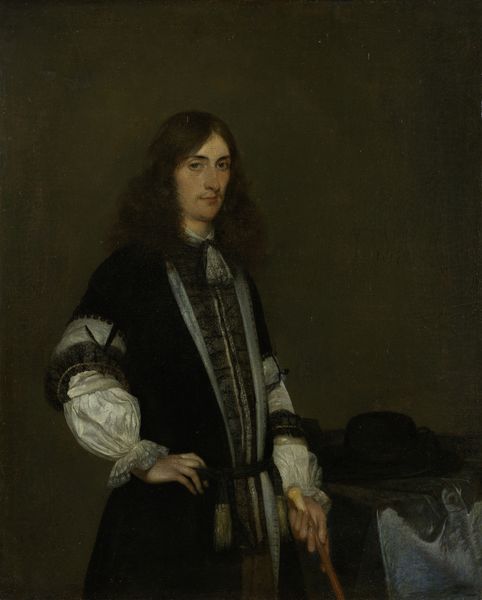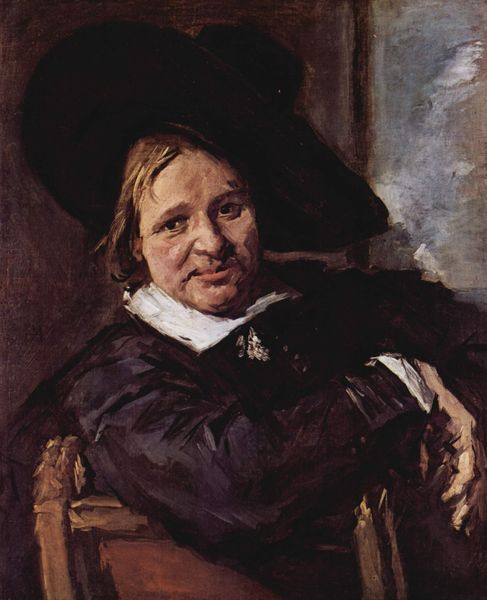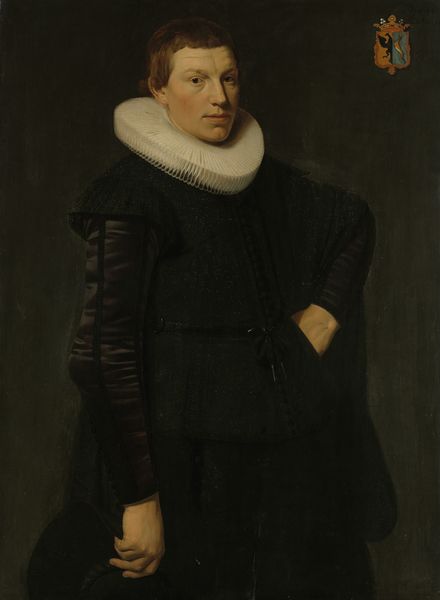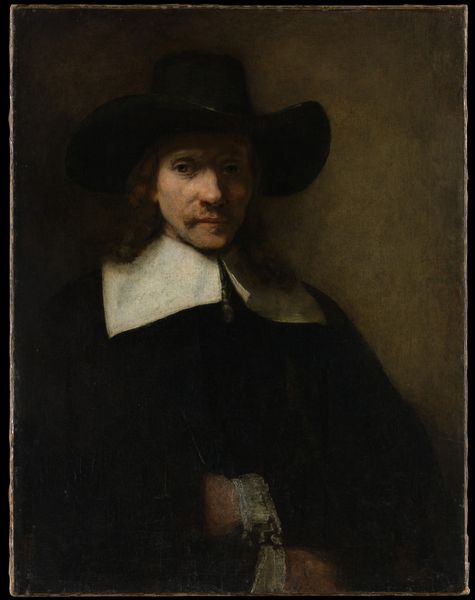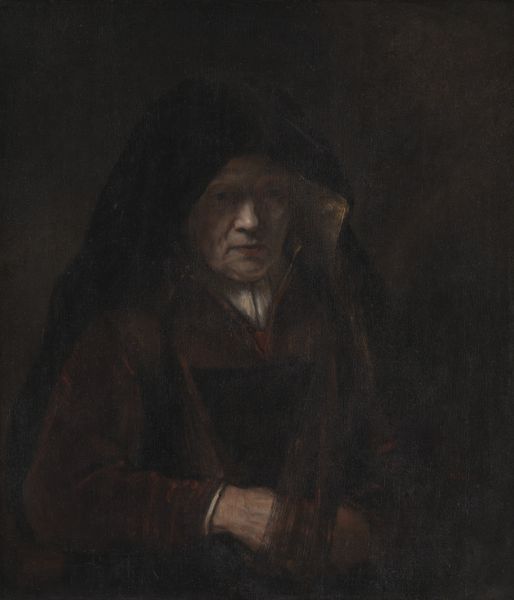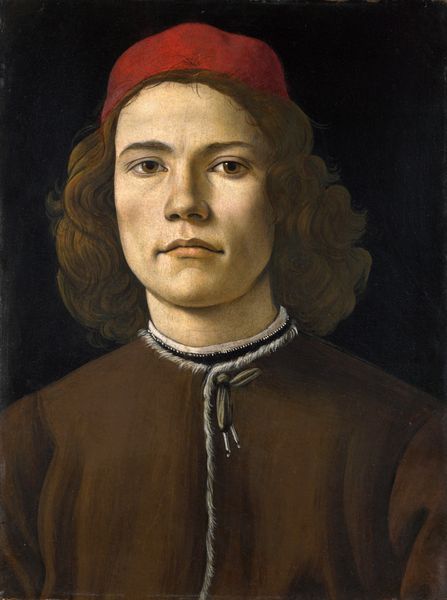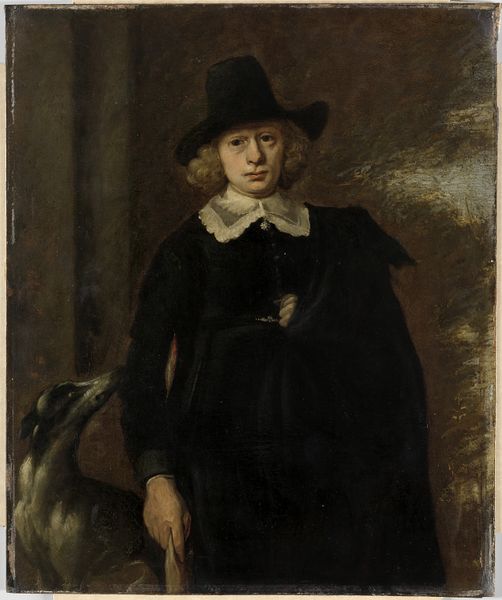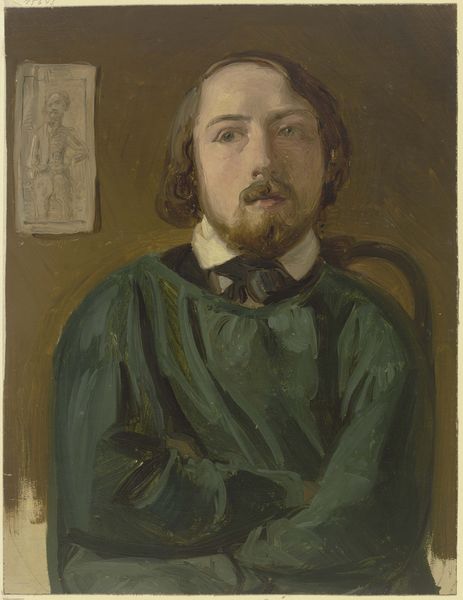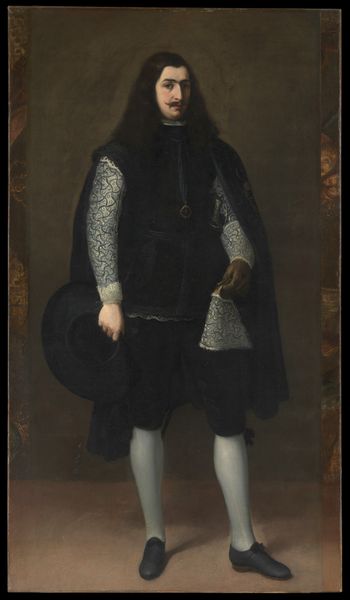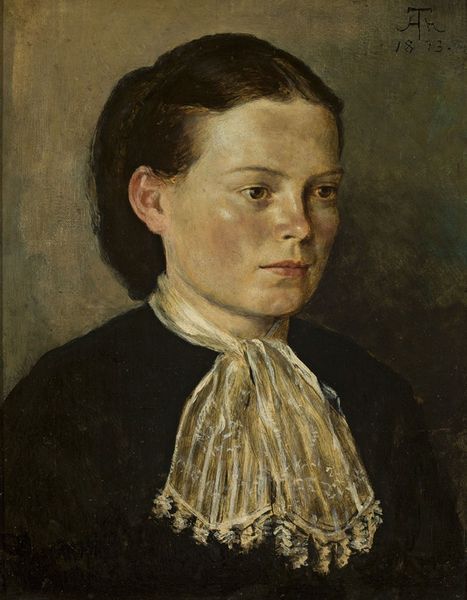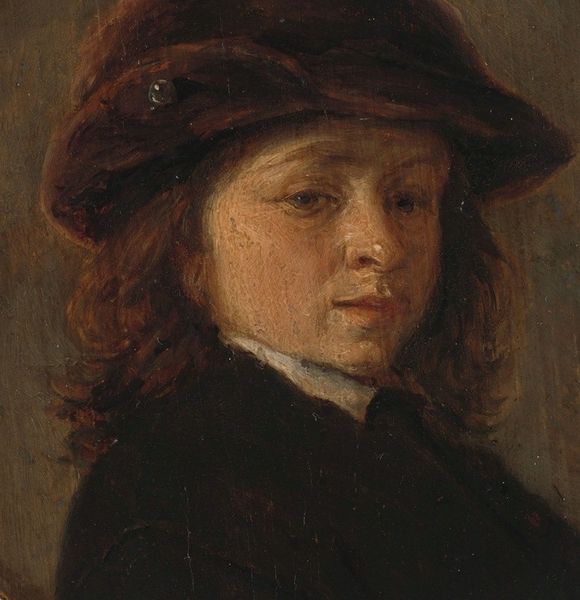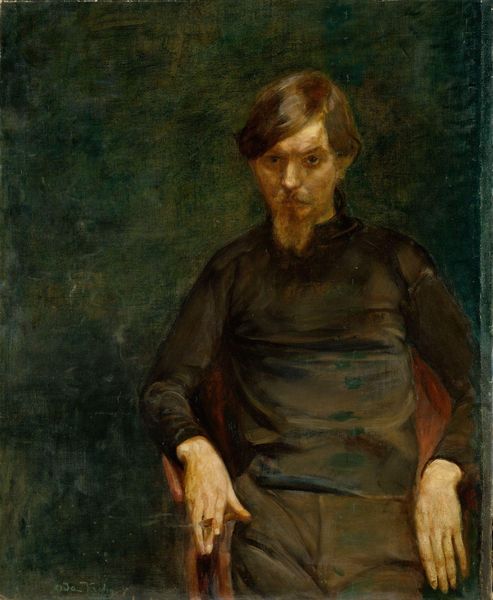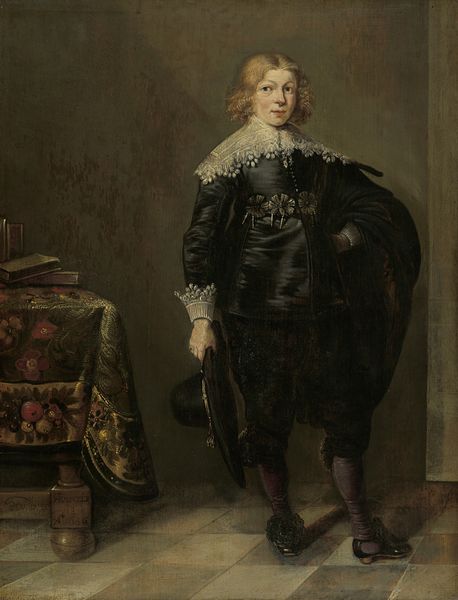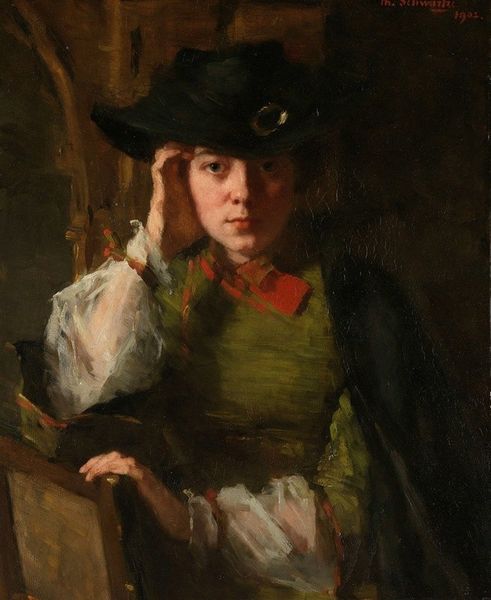
painting, oil-paint
#
portrait
#
baroque
#
painting
#
oil-paint
#
realism
Dimensions: 110.5 x 86.4 cm
Copyright: Public domain
Curator: Let's discuss Frans Hals's "Portrait of a Man," created around 1655. Hals was a master of capturing the immediacy of human presence. Editor: Immediately, I notice the dark, almost brooding color palette, it imbues the painting with such gravity. The light seems to catch only on his face and hands, drawing our focus. Curator: Absolutely. Consider the context. Hals was working during the Dutch Golden Age, a period of immense social change and growing mercantile power, which significantly impacted art patronage and production. This portrait would have likely served to project the sitter’s social status and individual character. Editor: And the loose brushwork—Hals's technique really anticipates Impressionism. Look at how he renders the lace, all suggestive strokes, rather than meticulous detail. Semiotically, the man's clothing and bearing speak volumes about his status; there’s a deliberate lack of flamboyance, suggestive of sober, Calvinist values perhaps. Curator: Precisely. This simplicity of dress aligns with the values of the rising merchant class. This man, with his understated attire and direct gaze, is communicating self-assuredness. The slight dishevelment in his hair softens any rigid power dynamics that might be assumed from the piece. There's a certain confidence implied by not overtly flaunting wealth and instead reflecting an understanding of evolving social roles. Editor: Yet, despite the subdued colors, the portrait vibrates with life because of the paint application. Observe how the artist plays with texture, juxtaposing smooth passages with areas of vigorous impasto. This enhances the presence, that undeniable vital spark that Hals was known for. Curator: His mastery lies in conveying individuality, even within the formal constraints of portraiture. His subject has an immediacy, an accessibility—even now, we are given space to interpret a man, facing a shifting society, seeking recognition beyond birthright. Editor: A fitting end note on this fascinating piece of art. I'm taken with how it showcases restrained energy via color and brushstroke. Curator: And how it represents a broader transformation in social dynamics. I look at this art and think of the tension between legacy and evolution, that defines an era.
Comments
No comments
Be the first to comment and join the conversation on the ultimate creative platform.
